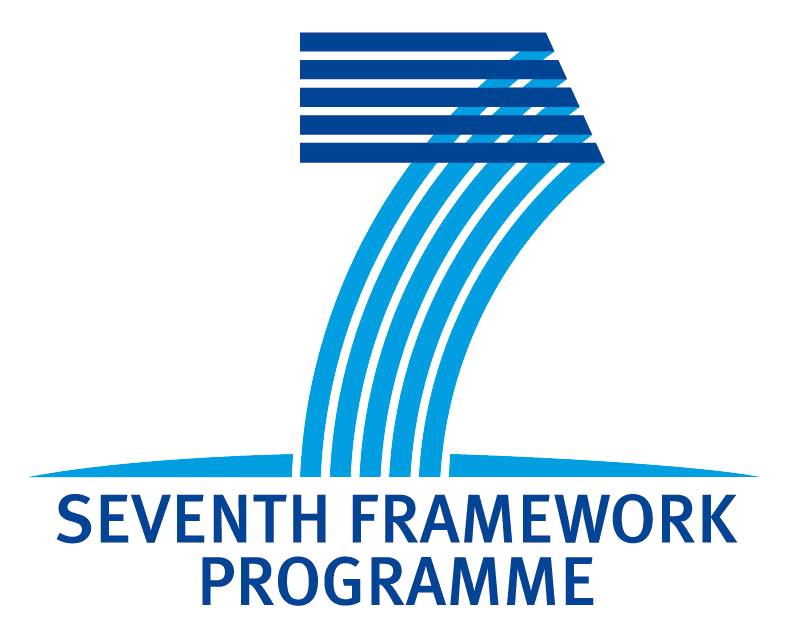Ontologies tutorial
Semantic Technologies Highlights
This is not a complete presentation and is not intended to be understood by simply reading through without a tutor.
- presentation pending (size limits)
Useful presentations
Recommended starting points are Fabien Gandon's presentations " ... in a nutshell "
Really easy to understand, used in Ontotext's induction program.
- RDF: http://www.slideshare.net/fabien_gandon/rdf-in-a-nutshell-v1
- RDFS: http://www.slideshare.net/fabien_gandon/rdfs-in-a-nutshell-v1
- Ontologies: http://www.slideshare.net/fabien_gandon/ontology-in-a-nutshell-version-2
- Ontologies in CS and on the Web: http://www.slideshare.net/fabien_gandon/ontologies-in-computer-science-a...
- SPARQL: http://www.slideshare.net/fabien_gandon/sparql-in-a-nutshell
- RDFa: http://www.slideshare.net/fabien_gandon/rdfa-in-a-nutshell-v1
And others:
- Open standards for the semantic web: http://www.slideshare.net/pdeleenh/open-standards-for-the-semantic-web-x...
- RDF & OWL - a simple overview: http://www.slideshare.net/rlovinger/rdf-and-owl
Ontology Design Best Practices:
- Design Patterns: http://ontologydesignpatterns.org/wiki/Community:ListPatterns
- There are also ontology, domain or system specific recommendations.
OWL
- W3C on OWL: http://www.w3.org/TR/owl-features/
- OWL Dialects, according to Ontotext: http://www.ontotext.com/inference/rdfs_rules_owl.html
Hands on
LDSR
- description: http://ontotext.com/ldsr/
- LDSR viewer itself: http://ldsr.ontotext.com/
Linked Data Semantic Repository (LDSR) represents a reason-able view to the web of data. It aims to allow users to find resources and facts based on the semantics of the data, like web search engines index WWW pages and facilitate their usage.
LDSR enables users to easily identify resources in the Linking Open Data (LOD) cloud. It provides efficient mechanism to query data from multiple datasets and sources, considering their semantics. LDSR is designed also as a use-case for large-scale reasoning and data integration.
LDSR includes several of the most central datasets of LOD. OWLIM semantic repository is used to load the data and "materialize" the facts that could be inferred from it. It is probably the largest and most heterogeneous body of general factual knowledge that was ever used for logical inference.
Ontology editors
The ones used in Ontotext are Protege, Swoop and TopBraid Composer.
Protege
Context Words:
Java-based, extensible, plug-and-play environment, Frames editor, OWL editor, debug, check, good for tests, graphical visualizations, KB framework, Formats: RDF(S), OWL, XML Schema; open source
version 3.2.1 of Protégé. Protégé is an ontology editor with functionalities for browsing, editing, and checking of existing ontologies and for creating new ontologies. Training how to use Protégé is a prerequisite. Note, that some of the functions of Protégé simply do not work.
URL: http://protege.stanford.edu/
Developed by: Stanford Center for Biomedical Informatics Research at the Stanford University School of Medicine.
Protégé is a free, open-source platform. It provides a suite of tools for constructing domain models and knowledge-based applications with ontologies. In its essence, Protégé implements a rich set of knowledge-modeling structures and actions that support the creation, visualization, and manipulation of ontologies in various representation formats. Protégé can be customized to provide domain-friendly support for creating knowledge models and entering data. Further, Protégé can be extended by way of a plug-in architecture and a Java-based Application Programming Interface (API) for building knowledge-based tools and applications.
Swoop
Context Words:
hypermedia-based, web browser (look and feel) - hyperlink based navigation, OWL ontology editor, inline editing, visualization of the class hierarchy, multiple ontology support (browsing, mapping, comparison), collaborative annotation support, open source
version 2.3 beta of Swoop. Swoop is an user-friendly free of charge ontology editor with functionalities for browsing, editing, and version control of existing ontologies and for creating new ontologies. The interface of Swoop is is intuitive; it requires no special training prior to start using it.
URL: http://code.google.com/p/swoop/
Developed by: MIND lab at University of Maryland, College Park
Swoop is an ontology browser and editor, designed specifically for use with OWL and directly supporting the use of Web-based ”cultural metaphors” – that is, based on the way people are used to interact with documents and data in current Web applications. SWOOP is currently an open source project with contributors from all over the world.
TopBraid Composer
Context Words:
user-friendly and intuitive interface, form-based and graphical editors, SPARQL queries, rules, supports XML, UML, Spreadsheets, RSS/Atom Feeds, and Relational Databases, RDF(S)/OWL; work with different reasoners and configure inference options, Query relational databases in real time, Visualize RDF data (graphs, diagrams, maps, matrixes and calendars), SparqlMotion, e-mails into OWL, integrated semantic Java Server Pages engine, business intelligence reports, Merge and re-factor RDF data, licenced.
TopBraid Composer is Eclipse-based ontology editor with functionalities for browsing, editing, and checking of existing ontologies and for creating new ontologies. Training how to use TopBraid Composer is a prerequisite.
URL: http://www.topquadrant.com/topbraid/composer/index.html
Developed by: TopQuadrant Inc.
TopBraid Composer is a professional development environment for W3C's Semantic Web standards RDF Schema, the OWL Web Ontology Language, the SPARQL Query Language and the Semantic Web Rule Language (SWRL). Composer can be used to edit RDFS/OWL files in various formats, and also provides scalable database backends (Jena, AllegroGraph, Oracle 11g and Sesame) as well as multi-user support.
TopBraid Composer provides a comprehensive set of features to cover the whole life cycle of semantic application development. In addition to being a complete ontology editor with refactoring support, TopBraid Composer can also be used as a run-time environment to execute rules, queries, reasoners and mash-ups. Based on Eclipse, TopBraid Composer can also be extended with custom Java plug-ins. This supports the rapid development of semantic applications in a single platform.
Comparisons and Surveys
- Login to post comments
What links here
No backlinks found.


